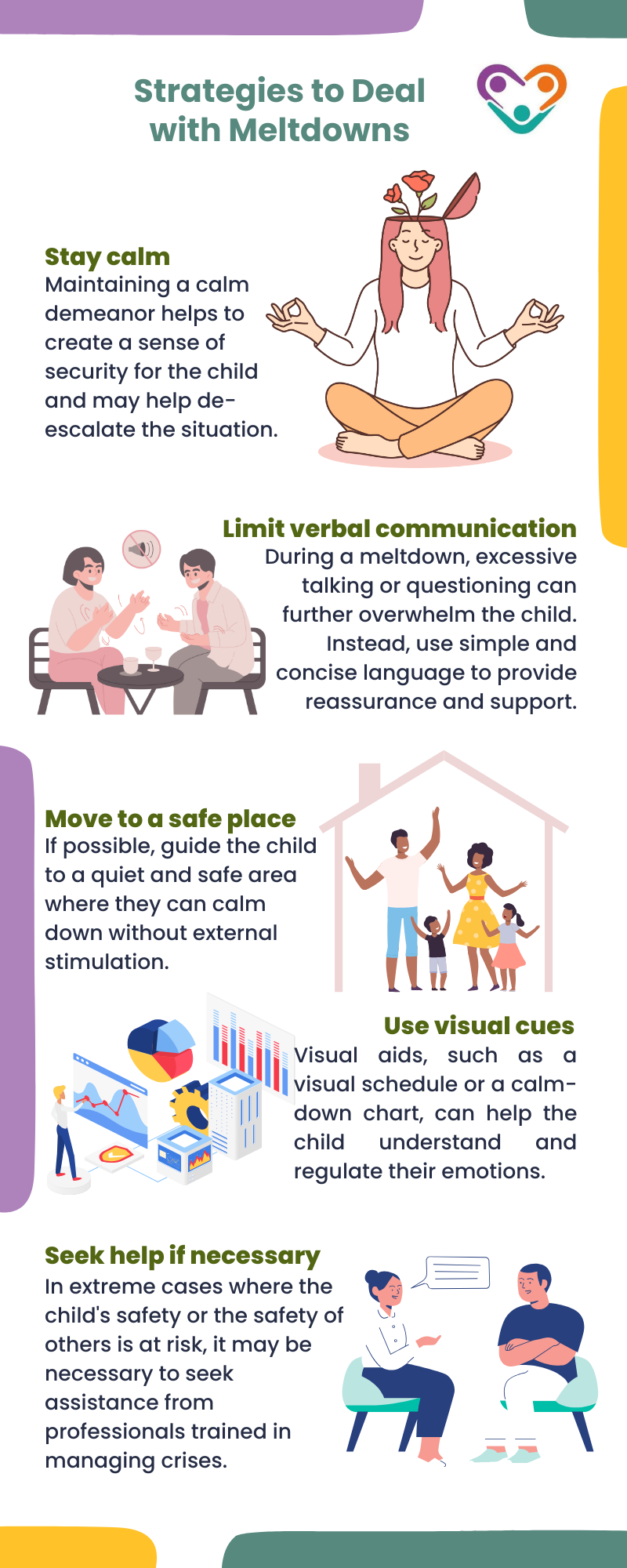Autism anger refers to when individuals with Autism Spectrum Disorder (ASD) exhibit aggressive or destructive behavior towards others or objects. Understanding the triggers and impact of autism anger is important to manage and support individuals with ASD effectively.
There are several factors that can act as triggers for autism anger in adults. These triggers may include overstimulation, loud noises, changes in routine, stress, and difficulties in following or understanding information.
By avoiding or mitigating these triggers, individuals with ASD can have a better chance of regulating their emotions and preventing anger outbursts.
In this article, we’re going to look at how parents and caregivers can help manage autism rage attacks experienced by individuals with autism.

The Impact of Autism Anger in Adults
Autism anger can have a significant impact on adults with ASD, as well as those around them. However, people have to understand that individuals with ASD may have difficulty interpreting changes in their own emotions and the emotions of others, which can lead to emotional extremes.
Uncontrolled anger can negatively affect personal relationships, daily functioning, and overall well-being.
Understanding and addressing autism anger is crucial for promoting a healthier and more fulfilling life for individuals with ASD.
Luckily, there are various strategies that can help individuals cope with their emotions effectively. Let’s look at each of them.
Physical Activity as a Coping Mechanism
Regular physical activity has been shown to be beneficial for individuals with autism, not only for their physical health but also for managing their emotions.
Engaging in physical activities can help reduce tension, relieve stress, and improve overall well-being.
Research from 2019 suggests that physical activity can have a positive effect on behavior in individuals with autism spectrum disorder (ASD). By incorporating physical activity into their routine, adults with autism can potentially experience a reduction in angry outbursts and better emotional regulation.

Using Relaxation Techniques for Calming Down
Relaxation techniques can be valuable tools in managing anger and promoting emotional well-being in individuals with autism. These techniques can help calm the mind and body, allowing individuals to regain control of their emotions.
Deep breathing exercises, progressive muscle relaxation, guided imagery, and mindfulness meditation are examples of relaxation techniques that can be beneficial.
Practicing these techniques regularly helps adults with autism with a repertoire of coping strategies to calm down and manage their anger effectively.
Utilizing the “Stop-Think” Technique
The “stop-think” technique is a valuable strategy for managing anger in individuals with autism.
This technique involves recognizing when anger arises and taking steps to address it effectively. The process begins by recognizing the initial signs of anger, such as increased heart rate or tension in the body.
Once these signs are noticed, individuals can pause and take a moment to think about the situation. This reflection allows them to consider the consequences of their actions and choose a more appropriate response. Incorporating this technique into their daily lives allows adults with autism to enhance their ability to manage anger and respond in a more controlled and constructive manner.
Using Clear Communication Strategies
Effective communication plays a crucial role in supporting individuals with autism. Clear communication can help reduce frustration and prevent anger outbursts.
When communicating with autistic individuals, it is important to speak clearly and precisely, using short sentences to avoid overwhelming them with excessive information.
Visual aids such as stress scales, PECS (Picture Exchange Communication System), and pictures can assist in communication as autistic individuals often find it easier to process visual information.
Providing Structure and Predictability
Autistic individuals often thrive in structured environments that provide a sense of predictability and routine. By creating a structured environment, we can reduce anxiety and minimize the likelihood of angry reactions.
Establishing consistent schedules, visual schedules, and clear expectations can help individuals with autism feel more secure and in control. Visual cues and reminders can also contribute to a smoother transition between activities.
As a result, it can reduce potential triggers for anger and frustration.
Helping Identify and Express Emotions
One of the challenges faced by individuals with autism is identifying and understanding their emotions. Assisting them in recognizing and expressing their emotions can be instrumental in managing anger and preventing rage attacks.
Tools such as stress scales, traffic light systems, or numbered scales can be used to help individuals with autism understand and communicate their emotions in a more concrete manner.
By providing these tools and teaching them to identify and express their emotions, we can empower autistic individuals to manage their emotions and prevent anger outbursts.
Offering Safe Spaces and Time-Outs
Offering a safe space or providing a designated area for individuals with autism to retreat to can be extremely beneficial during moments of anger or distress. This safe space should be a calming environment, free from potential triggers or stressors. It can be a quiet room, a cozy corner, or even a specific spot outdoors where the individual feels comfortable and secure.
Time-outs can also be an effective technique for managing anger. It involves encouraging the individual to take a break from the situation that is causing distress.
During this time, they can engage in self-calming activities such as deep breathing exercises, listening to calming music, or engaging in a favorite sensory activity. Time-outs provide an opportunity for individuals to regain control over their emotions and prevent the escalation of anger.

Engaging in Physical Activities
Engaging in physical activities can be an effective outlet for releasing pent-up energy and reducing anxiety in autistic individuals.
By providing alternative ways to channel their emotions, physical activities offer a healthier avenue for expression. Some examples of activities that can help in calming include using a punching bag, bouncing on a trampoline, or running around in a safe outdoor environment.
Physical activities not only help in releasing energy but also provide sensory input, which can have a calming effect on individuals with autism.
However, it is essential to identify activities that are enjoyable for the individual and allow them to engage in these activities regularly to promote overall emotional well-being.
Using Visual Aids for Communication and Expression
Clear communication is crucial when managing autism rage attacks. Utilizing visual aids can greatly assist in communication as autistic individuals often find it easier to process visual information.
Visual aids such as stress scales, traffic light systems, or numbered scales can help individuals identify and understand their emotions more effectively. These tools provide a concrete way to express emotions and help individuals communicate their feelings and needs.
Visual aids can also be used to support communication during moments of anger or distress. Using visual schedules, social stories, or visual cues can help individuals understand and follow instructions, reducing frustration and potential triggers for anger outbursts.

How to Handle Aggressive Behavior in Children
Aggressive behavior is a common challenge faced by parents and caregivers of autistic children. Understanding the triggers for aggressive behavior and implementing effective strategies to manage meltdowns and self-injurious behavior is essential for creating a safe and supportive environment.
Here are some strategies that parents and caregivers can use to handle aggressive behavior in children with autism:
Understand Aggressive Behavior Triggers
Autistic children and teenagers may express their emotions through aggressive behavior, which can be directed toward objects, other people, or themselves.
It is important to identify the triggers that lead to aggressive outbursts in order to implement appropriate strategies. Common triggers for aggressive behavior in autistic children include sensory overload, communication difficulties, changes in routine, and feeling overwhelmed or frustrated.
Learn How to Deal with Meltdowns
Meltdowns in autistic children and teenagers are a sign of distress, where they lose control of their behavior and find it challenging to calm themselves. It is crucial for parents and caregivers to remain calm and provide support during these episodes.
Here are some strategies to help manage meltdowns:

Manage Self-Injurious Behavior
Self-injurious behavior is a challenging aspect of autism where the child engages in actions that harm themselves. It is important to approach these situations with care and implement strategies to ensure the safety and well-being of the child.
Here are some strategies that parents and caregivers can follow:
- Stay calm – Remaining calm and composed helps create a sense of stability and reassurance for the child.
- Pause demands – If the child is engaging in self-injurious behavior in response to a demand or request, temporarily pause the demand and allow the child to regain their composure.
- Change the environment – Modify the environment to reduce potential triggers. This may involve creating a quiet and soothing space or removing objects that may cause distress.
- Remove harmful items and provide alternatives – If the child is fixated on a specific object or engaging in self-injurious behavior with a particular item, remove it from their reach and offer a safer alternative or a sensory tool for redirection.
- Encourage engagement in another activity – Redirect the child’s attention to a preferred activity that can serve as a distraction and help them calm down.
- Praise for calming down – Once the child has calmed down and engaged in a more appropriate behavior, provide positive reinforcement and praise for their self-regulation.
Understanding the reasons why rage attacks occur among individuals with autism is crucial for developing effective preventive and management strategies.
By creating a supportive and calm environment as well as implementing appropriate interventions, parents and caregivers can help their children manage and reduce aggressive behaviors as a whole.

Seek Professional Help When Needed
In some cases, managing autism rage attacks may require professional guidance and support.
This is where consulting with healthcare professionals, therapists, or counselors who specialize in autism is necessary in order to gather valuable insights and strategies tailored to the specific needs of the individual. These professionals can help identify the underlying causes of aggression and develop personalized interventions.
Professional help may also include therapies such as Applied Behavior Analysis (ABA), Cognitive-Behavioral Therapy (CBT), or anger management programs designed specifically for individuals on the autism spectrum.
These interventions can equip individuals with coping mechanisms and teach alternative ways to express emotions, reducing the likelihood of rage attacks.
It is important to remember that each individual is unique, so strategies should be tailored to meet their specific needs and preferences. With patience, understanding, and a proactive approach, it is possible to create a more peaceful and harmonious environment for individuals with autism.
If you’re seeking specialized ABA therapy in New Jersey, Indiana, Georgia, and New York, Golden Care offers comprehensive services tailored to meet the unique needs of each individual. Contact us to learn more or book a consultation today.
Sources:
https://www.medicalnewstoday.com/articles/how-to-deal-with-autism-anger-in-adults
https://www.autism.org.uk/advice-and-guidance/topics/behaviour/anger-management/parents
https://raisingchildren.net.au/autism/behaviour/common-concerns/aggressive-behaviour-asd
https://www.autism360.com/10-strategies-to-handle-violent-autistic-behavior-in-children



